Raised garden beds provide better drainage, soil control, and accessibility. Plant growth can be accelerated by filling them with a unique combination of soil, compost, and other additives.
Furthermore, the raised structure lowers the likelihood of plant disease and wet roots. Raised beds make planting, weeding, and harvesting easier.
Key Considerations Before Designing
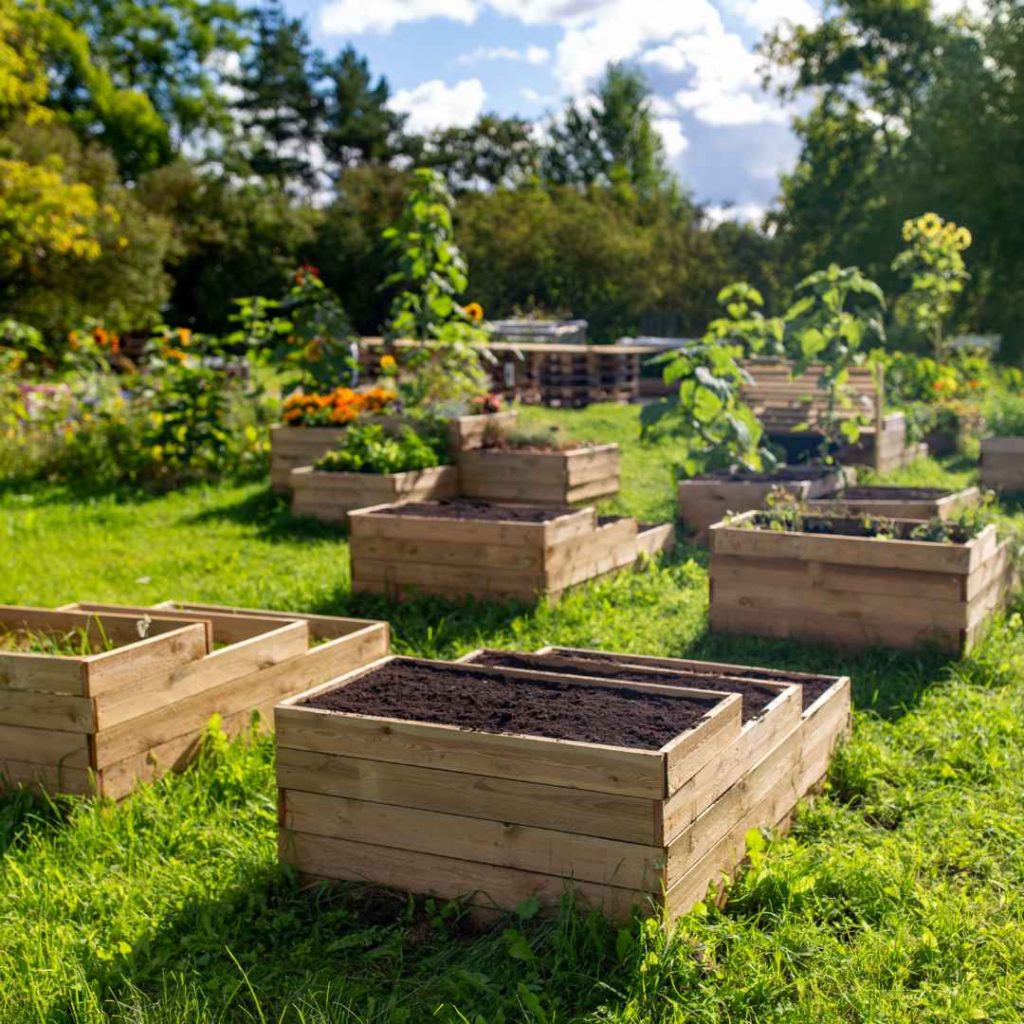
Understanding Your Space
The first step in creating a well-designed garden is to precisely measure your garden space. This will allow you to determine how much space is available for planting areas and walkways.
Using these measurements, determine the size and shape of raised beds, keeping planting, accessibility, and upkeep in mind. Conduct a site analysis to ensure that no existing obstacles or structures obstruct your garden design.
Sunlight and Shade
Measure the movement of sunlight throughout the day to see which parts of your garden get full sun, partial shade, or full shade. Raised beds and other garden features should be placed so that the plants receive the most sunlight.
Taller plants should be placed so they do not shade the smaller ones. Consider seasonal variations in sunlight patterns to ensure that plants get enough light throughout the year.
Soil Preparation
Plant growth in raised beds is heavily dependent on soil quality. Make sure the soil is fertile, well-drained, and suitable for plant growth. Avoid using sandy or heavy clay soil right away.
Manure and compost can improve soil structure and nutrient content. To provide nutrients and adjust pH levels for optimal plant health, test the soil and apply amendments like lime or sulfur.
Watering and Irrigation
Watering systems are planned by determining how much water plants require, taking climate and weather patterns into account, and organizing effective irrigation solutions such as drip irrigation, soaker hoses, or rainwater collection systems.
Make sure the irrigation system is easy to use and covers the entire garden, including hard-to-reach areas. Taking these factors into account, you can create a garden that fits your space, encourages plant growth, and makes gardening both successful and enjoyable.
10 Vegetable Garden Layouts
U-Shaped Raised Bed
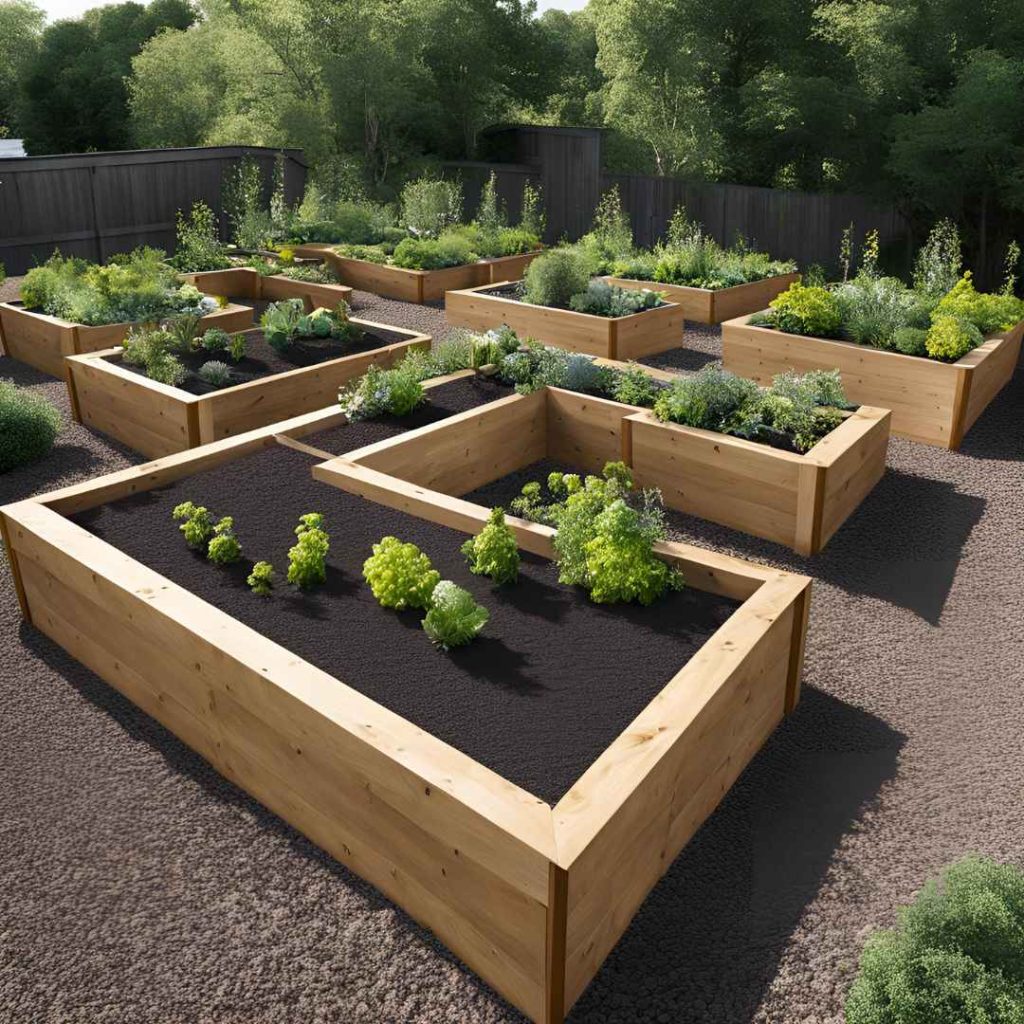
A U-shaped raised bed’s central walkway allows gardeners to easily access all areas from a single point of entry. This design is especially useful for larger raised beds because it allows for more crops to be planted while still providing easy access.
The U-shaped design maximizes planting area, making it ideal for those who have plenty of space but prefer low maintenance. Furthermore, it reduces the need for soil compaction, which can impede root development and decrease soil aeration, both of which are detrimental to plant health.
The U-shaped design encourages root growth and water absorption, making it an excellent choice for gardeners with larger plots.
Vertical Garden
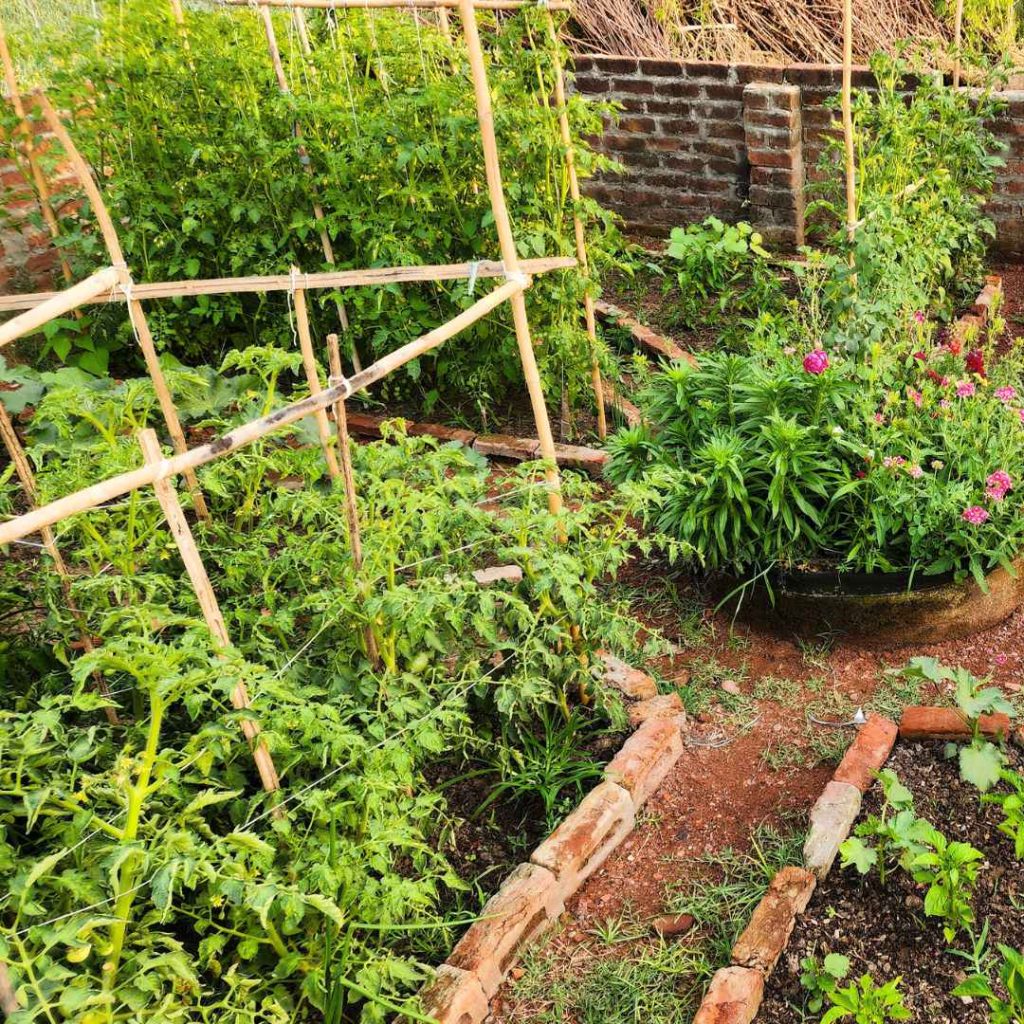
Vertical gardening is a technique for supporting the growth of climbing plants like tomatoes, cucumbers, beans, and peas using vertical structures like trellises, stakes, or cages. This technique is especially effective in small gardens because it maximizes available horizontal space.
Vertical gardening requires less ground space, allowing a single bed to support a wider variety of vegetables. It also doubles the productive area, which results in a higher yield per square foot.
Furthermore, vertical growing improves air circulation, lowering the risk of fungal disease and promoting healthier plants. Vertical gardens facilitate harvesting by making fruits and vegetables more accessible and visible.
This method is ideal for gardeners who want to maximize their space, increase productivity, and create a visually appealing environment.
Herb and Vegetable Mix
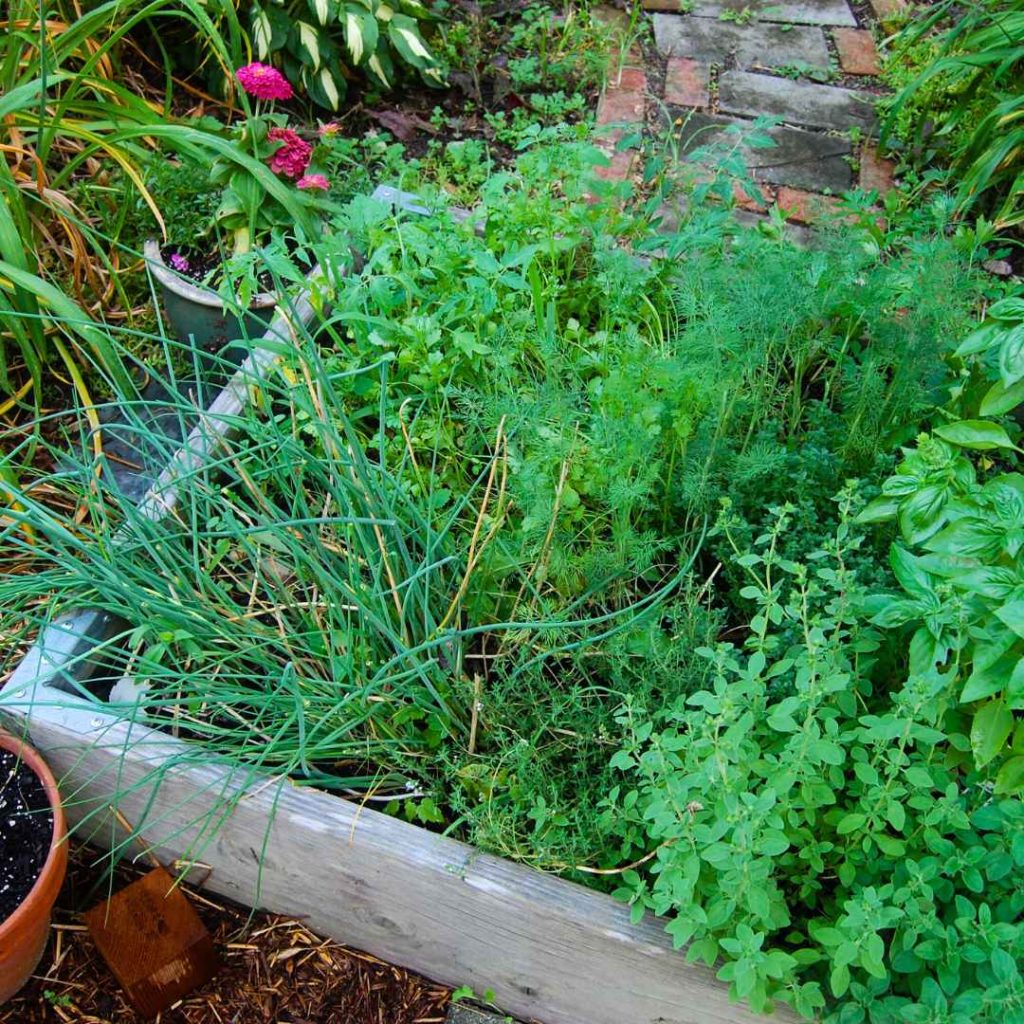
Planting herbs and vegetables in the same raised bed can help with natural pest control and flavor enhancement. This is known as the herb and vegetable mixture layout. Dill with cabbage, cilantro with peppers, and basil with tomatoes are all popular combinations.
These plants promote one another’s growth by creating a harmonious environment. Herbs such as basil, mint, and rosemary naturally repel pests, reducing the need for chemical pesticides.
When harvested and combined with other nearby vegetables, they improve their flavor. This arrangement is especially beneficial for small gardens or urban settings because it maximizes available space while also encouraging a healthier, more fruitful garden.
Keep Reading
- How To Start Raised Bed Vegetable Gardening For Beginners?
- 10 Raised Garden Bed Plans For Seniors
- Everything You Need To Know – What To Put At The Bottom Of Raised Bed?
- Every Thing About Watering Your Plants In A Raised Bed Garden
Zigzag Pathway
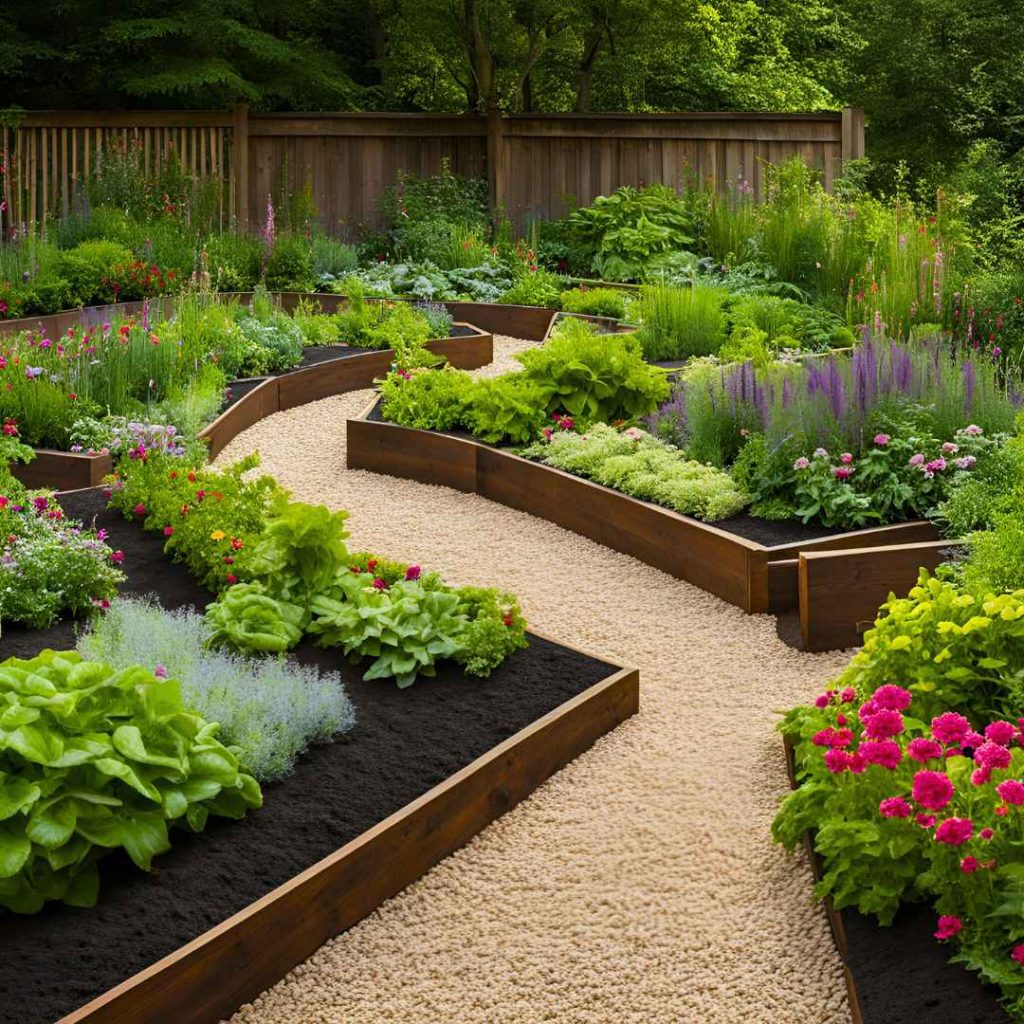
The dynamic zigzag pathway layout maximises planting space while also improving the visual appeal of the garden by creating a winding path within an elevated bed. This design is best suited for larger raised beds where a straight path would be inefficient.
The zigzag pattern breaks up the bed arrangement, giving it an organic, natural appearance. This design maximizes available space while remaining accessible and requiring minimal walking. The zigzag path’s various sections enable a diverse planting plan by designating specific areas for different plant types.
This arrangement makes raised beds both visually appealing and productive, encouraging imaginative companion planting and plant combinations. Overall, gardeners seeking a balance of functionality and aesthetics will be delighted with the zigzag pathway design.
Square Foot Gardening
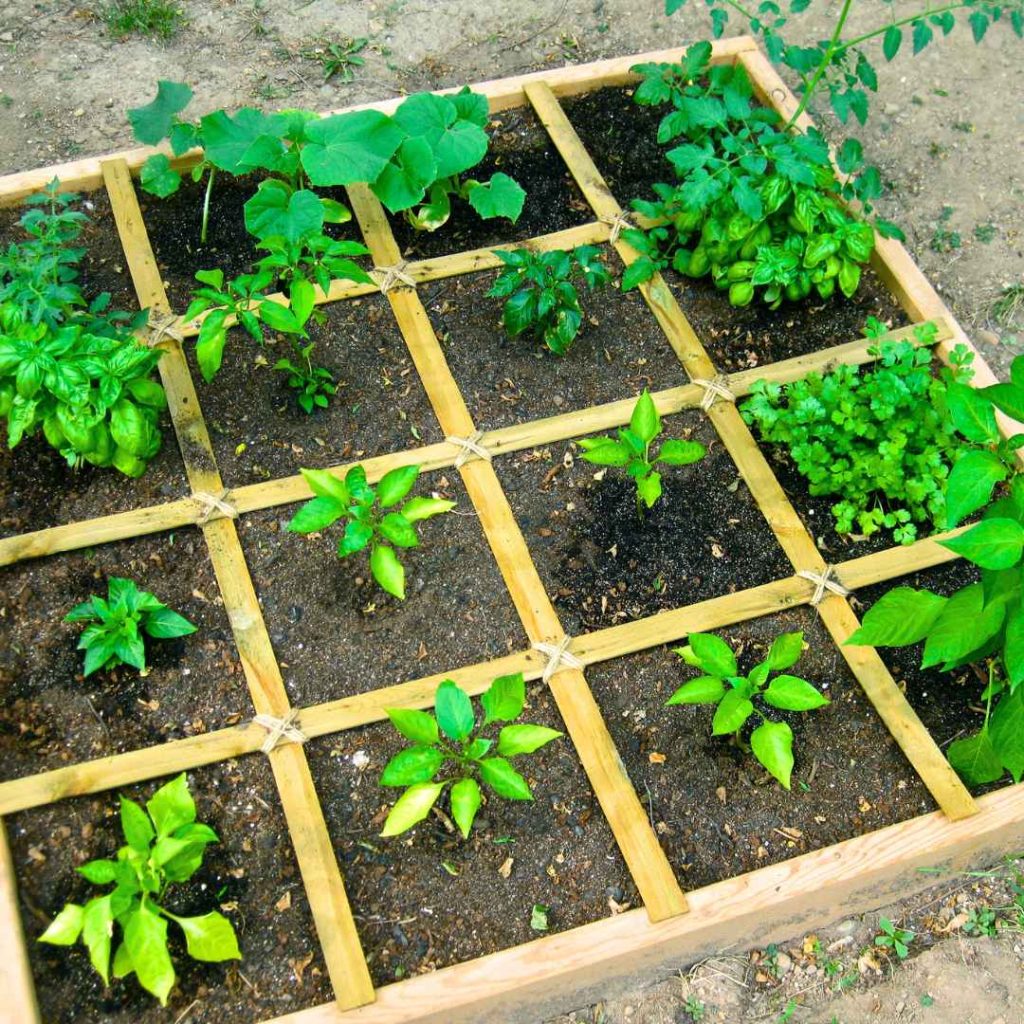
Planting in raised beds by cutting plants into 1-foot-by-1-foot squares is known as “square foot gardening.” Every square is treated as a miniature garden, with a predetermined number of plants selected based on their growth habits and size.
This design allows for precise planting, simple crop rotation, and efficient space utilization. It increases garden space, simplifies crop management, reduces weed growth, and facilitates maintenance. It also increases gardening efficiency by encouraging higher crop yields in smaller areas.
Keyhole Garden Layout
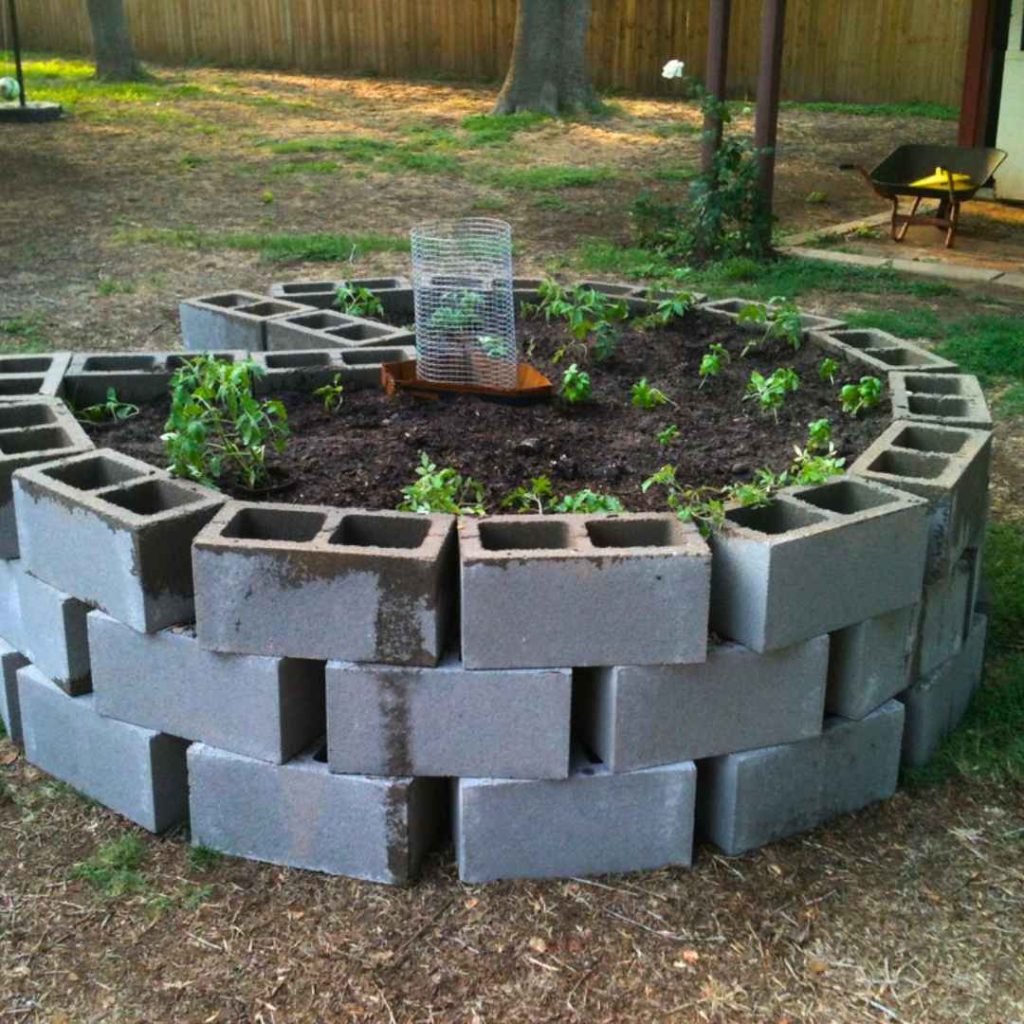
The Keyhole Garden Layout features raised beds arranged around a path that leads to a composting basket in the center. When filled with organic kitchen scraps and garden waste, this basket enriches the soil and gives plants a steady supply of nutrients.
It is appropriate for dry climates or areas with limited water supplies because the raised edges conserve water. The central composting basket allows for the continuous breakdown of organic matter, eliminating the need for external fertilizers.
The raised edges and circular shape of the garden make it more sustainable by reducing the frequency with which it is watered. The compost decomposes, improving soil quality and encouraging the growth of healthy plants.
Seasonal Rotation
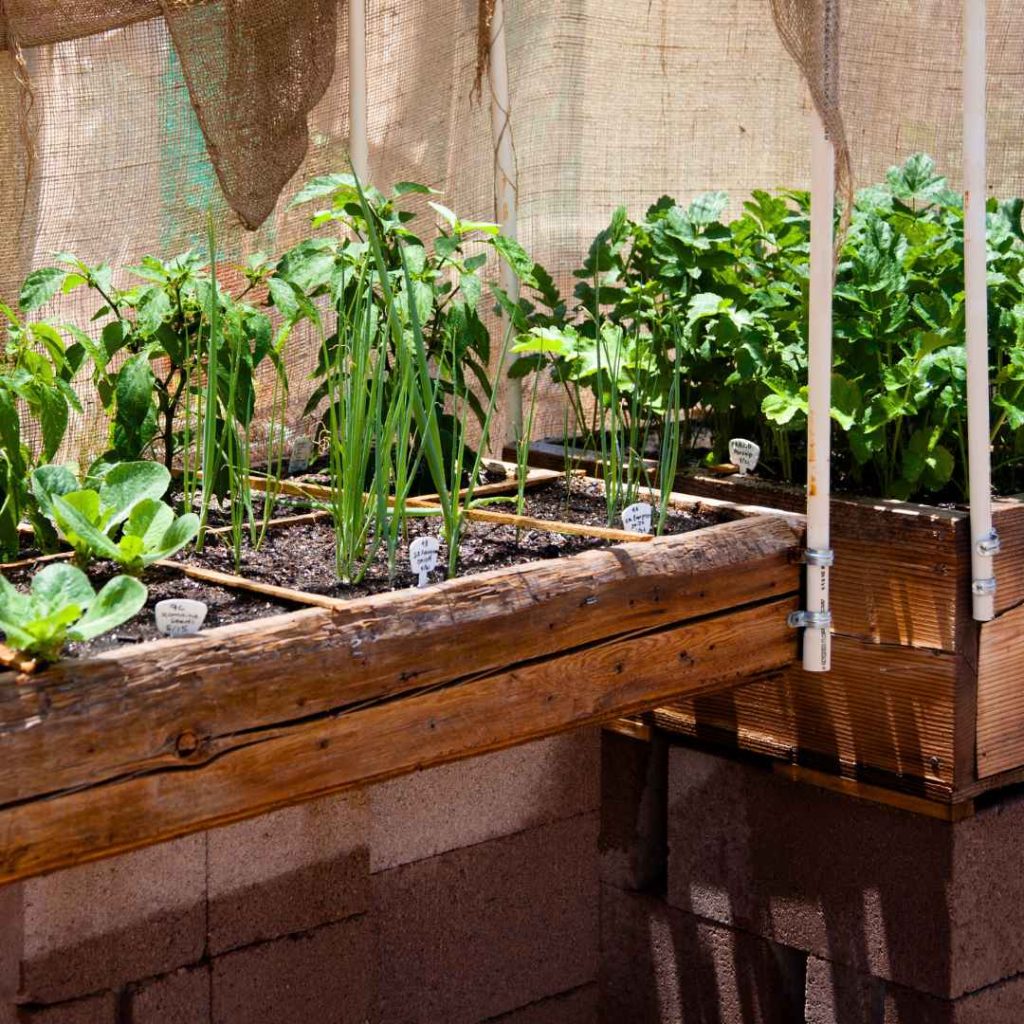
Seasonal rotation is a technique that divides a raised bed into sections and plants different crops in each section based on the season. This ensures that the bed is used effectively throughout the year, producing a diverse and consistent supply of fresh produce.
Seasonal rotation allows plants to adapt to changing growing conditions and temperatures while also maximizing growth and yield. Changing the types of plants grown in each section also contributes to soil fertility, which improves soil health in a variety of ways.
Legumes, for example, can fix nitrogen in the soil, benefiting future crops that require more nitrogen. Rotation also reduces the risk of soil-borne illnesses and pests, which can accumulate when the same crops are grown in the same location on a regular basis.
Companion Planting
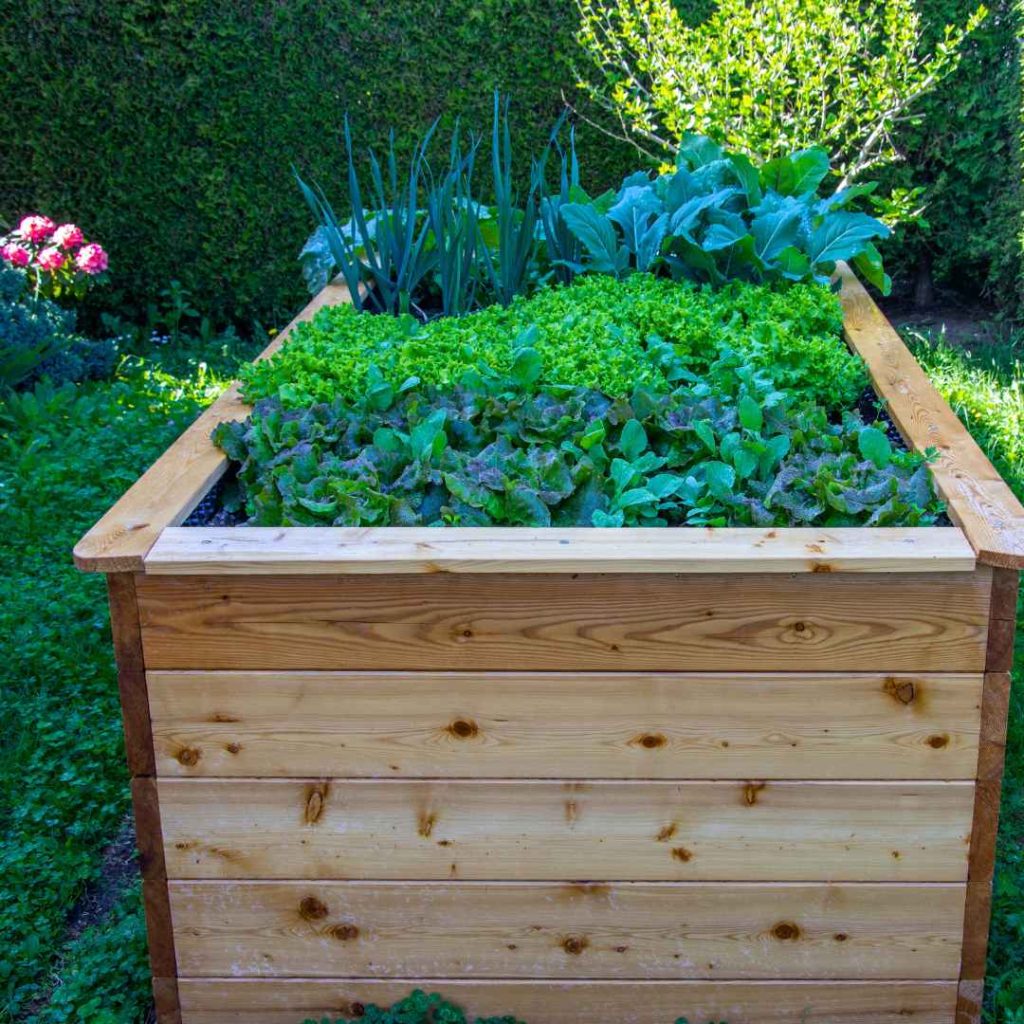
Companion planting, which involves grouping different plant species in an elevated bed, can promote mutually beneficial interactions. It aims to improve soil health, promote mutual growth, and offer organic pest control.
For example, to deter nematodes, plant marigolds near tomatoes, or to fix nitrogen, plant beans alongside corn. The advantages include improved soil health, less reliance on chemical treatments, increased growth, and pest deterrence.
In addition to creating a healthier garden environment, companion planting encourages more sustainable and eco-friendly gardening techniques, which may reduce the cost and environmental impact of chemical products.
Raised beds contribute to a more resilient and balanced ecosystem, as well as increased garden health and yield.
Crops In Rows
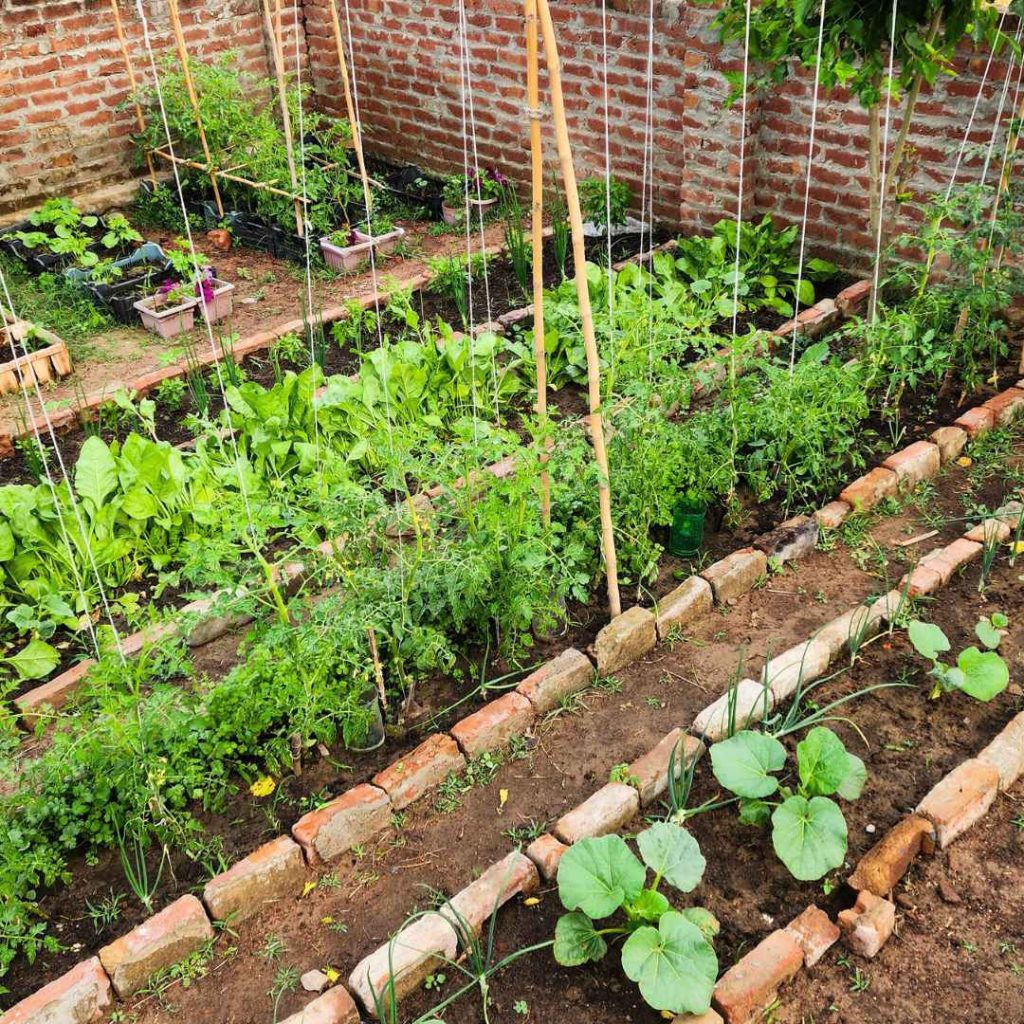
A raised bed is used for row crops, a traditional gardening technique that involves planting plants in parallel rows. This design creates distinct, well-organized lines for all types of crops, simplifying irrigation, maintenance, and harvesting.
It makes gardening tasks like mulching, weeding, and plant health monitoring easier while also allowing gardeners to move between rows without disrupting other plants. Furthermore, rows facilitate crop location and harvesting, particularly when plants are properly spaced.
This arrangement is ideal for root crops like potatoes, beets, and carrots because it allows their roots to spread out without being crowded. It also promotes healthy growth in plants like cabbage and squash, which require more room to grow. Crops perform best when they are organized in rows.
Themed Beds
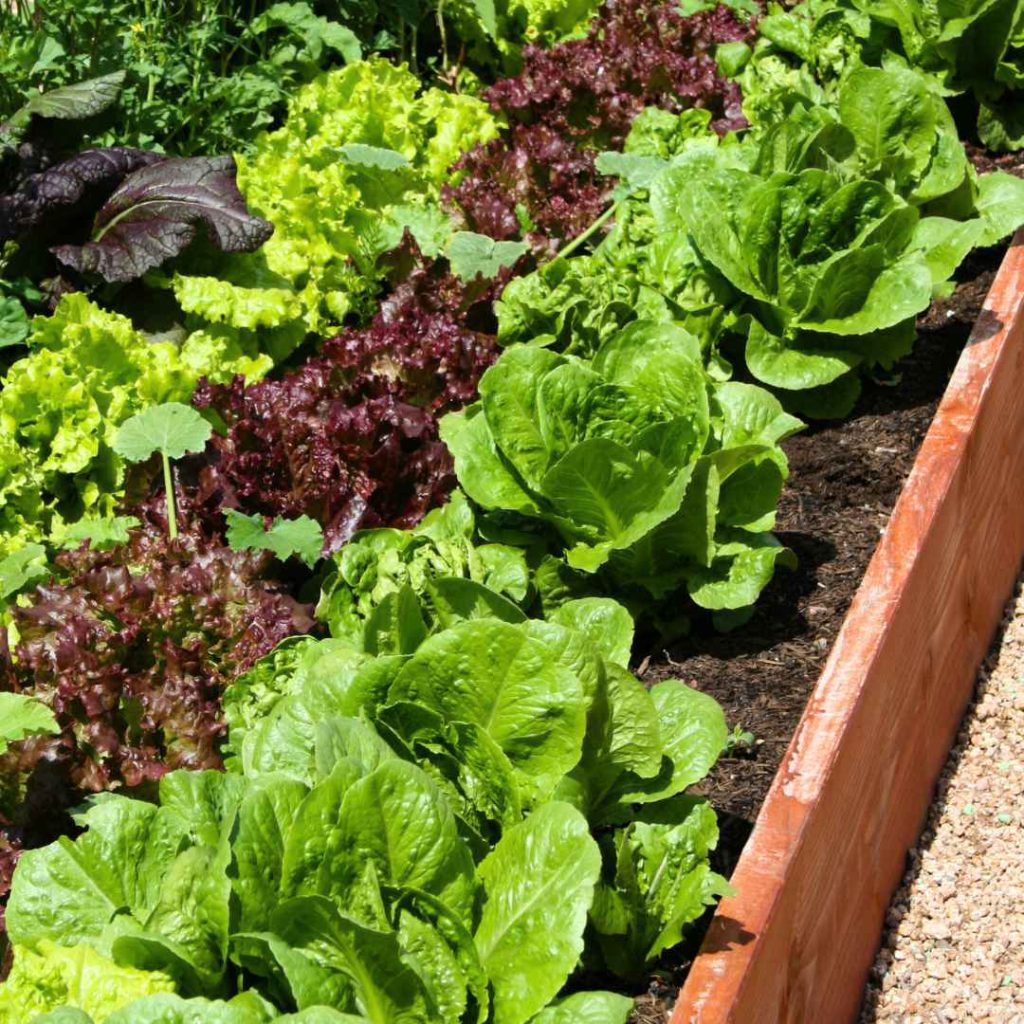
Raised beds with specific culinary or gardening themes, such as “salad garden,” “stir-fry garden,” or “pizza garden,” are known as themed beds. These beds make it easier to harvest ingredients for specific meals by combining plants with complementary properties.
They also gather the necessary ingredients together, making meal planning easier. Themed gardening encourages experimentation with various plant combinations and new recipes, making it both enjoyable and educational.
It offers an opportunity to learn more about seasonal planting, plant growth, and the advantages of vegetables and herbs. Themes can pique people’s interest in cooking and gardening, inspiring them to try new plant varieties or techniques. Overall, themed beds are a useful and entertaining gardening technique.
Raised bed garden designs vary depending on space, plant selection, and gardening goals. While intricate designs are ideal for larger gardens, compact layouts work best in smaller ones.
Plant selection should complement the design, and gardening objectives should be consistent with available time and lifestyle.
A thriving and productive garden necessitates regular maintenance, crop rotation, and ongoing education. Staying up to date on the latest trends, plant varieties, and techniques can help you garden more successfully and efficiently.
